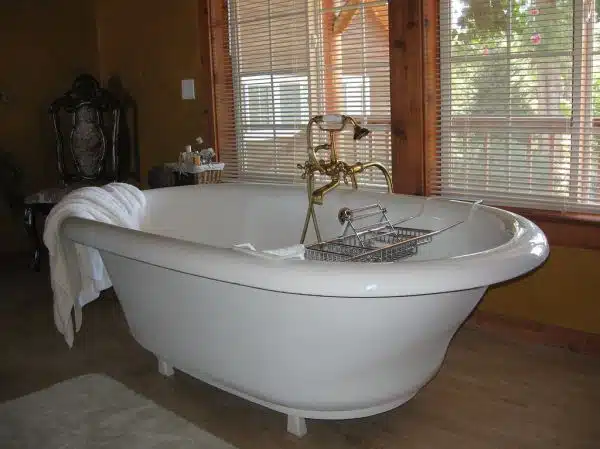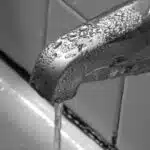Bathtubs are an essential part of any home, but over time they can become dated, stained, or damaged. Replacing a bathtub can be an expensive and time-consuming process, but there is an alternative: refinishing it with a DIY kit. Not only is this option more cost-effective, but it also allows you to customize your bathtub’s color and finish to your liking.
DIY bathtub refinishing kits have gained popularity in recent years as an accessible solution for homeowners who want to update their bathtubs without breaking the bank. However, before embarking on this project, it’s important to understand the process and have realistic expectations for the results. In this article, we will guide you through the steps necessary for successfully refinishing your bathtub using a DIY kit and provide tips on how to achieve professional-looking results.
Assessing The Condition Of Your Bathtub
Before starting your bathtub refinishing project, it is essential to assess the condition of your tub. Signs of wear such as chips, cracks, and discoloration are usually an indication that your tub needs refinishing. Other factors such as excessive scratching, rusting or staining may also be a sign that it is time for a new finish. A professional evaluation can help you determine if your bathtub is suitable for refinishing or if replacing it is the better option.
Refinishing your bathtub can be significantly cheaper than replacing it entirely. The cost comparison between these two options will depend on several factors such as the size, materials used in construction and accessibility to plumbing fixtures. Refinishing kits typically range from $30 to $200 depending on quality and brand while replacement costs can run anywhere from $500 to $3,000 depending on the scope of work.
Assessing the condition of your bathtub is crucial in determining whether you should refinish or replace it altogether. Once you’ve determined that refinishing is the way forward, it’s time to choose the right kit that suits your needs.
Choosing The Right Refinishing Kit
Selecting the most suitable refinishing kit for the job is essential for a successful outcome. The surface must be thoroughly cleaned and prepped for optimal adhesion of the refinishing product. Careful attention should be paid to any cracks or chips to ensure proper coverage and a smooth finish. A quality refinishing kit should include all necessary components and provide clear instructions on proper application.
Choosing The Right Product
When it comes to refinishing a bathtub, there are several DIY kit types to choose from. It’s important to carefully evaluate each product and decide which one will work best for your specific needs. Some kits require more preparation work than others, while others may require multiple coats for better coverage. Take the time to compare DIY vs professional refinishing options before making a decision.
One popular type of DIY kit is the epoxy-based paint kit. These kits are relatively easy to use and provide a durable finish that can last for several years. However, they may require multiple coats and careful application to avoid streaks or bubbles. Another option is the acrylic urethane kit, which provides a glossy finish that is resistant to chipping and peeling. These kits often come with everything you need, including sandpaper and cleaning supplies.
Before purchasing a DIY kit, it’s important to consider your skill level and comfort with the process. Professional refinishing services offer a guaranteed finish but come at a higher cost. DIY kits can save money but may require more effort on your part. Ultimately, choosing the right product depends on your budget, desired outcome, and willingness to put in the work. By carefully evaluating each option and understanding their pros and cons, you can successfully refinish your bathtub with confidence.
Preparing The Surface
When it comes to refinishing a bathtub, choosing the right kit is crucial for achieving a successful outcome. However, before applying any refinishing product, it’s essential to prepare the surface properly. Neglecting this step could result in an uneven finish or premature peeling and chipping. Therefore, taking some time to learn how to clean and prepare the tub’s surface can make all the difference.
Before starting, gather all necessary cleaning supplies such as degreasers, sandpaper, and safety equipment like gloves and masks. Cleaning the tub involves removing all soap scum, mineral deposits, and oils from the surface using a non-abrasive cleaner. After that, thoroughly rinse the tub with water and let it dry completely. Once dry, sanding the surface with fine-grit sandpaper will help remove any remaining residue and create a better bond between the surface and refinishing product.
Taking safety precautions is also important when preparing a bathtub’s surface for refinishing. Wear protective gear like gloves and masks to avoid skin contact or inhaling fumes from harsh chemicals. Also, ensure there is proper ventilation in the room by opening windows or using fans to prevent toxic fumes from accumulating.
In conclusion, preparing a bathtub’s surface is crucial for achieving an even finish that lasts longer. Properly cleaning and sanding are essential steps before applying any refinishing product. Additionally, taking safety precautions during this process can prevent any harm from occurring while working on your DIY project.
Preparing Your Bathtub
Imagine you are painting a masterpiece. Before you even touch the canvas, you must prepare your tools and workspace. The same goes for bathtub refinishing. Preparation is key to achieving a beautiful, long-lasting finish on your bathtub.
To begin preparing your bathtub for refinishing, remove any hardware or fixtures that may be in the way. This includes showerheads, faucets, and handles. Next, clean the surface of your tub thoroughly using a non-abrasive cleaner to remove any dirt or grime that has accumulated over time. Once the surface is clean and dry, use 220-grit sandpaper to scuff the surface of the bathtub so that it is no longer glossy. This will help the refinishing kit adhere better to the surface.
After you have cleaned and sanded your tub, it’s important to repair any chips or cracks in the surface before continuing with the refinishing process. If left unaddressed, these imperfections can cause an uneven finish or allow water to seep underneath, leading to further damage down the line. For small chips or cracks, use a two-part epoxy putty to fill in the damaged area and let it cure according to manufacturer instructions. For larger areas of damage or extensive wear and tear on your tub’s surface, consider calling in a professional for bathtub repair or replacement.
Preparing Your Bathtub Checklist
- Remove hardware/fixtures
- Clean bathtub thoroughly
- Scuff bathtub with 220-grit sandpaper
- Repair chips/cracks using two-part epoxy putty
Next up: removing old caulk and adhesives without damaging your tub’s surface – stay tuned!
Removing Old Caulk And Adhesives
Once you have adequately prepared your bathtub for refinishing, the next step is to remove any old caulk or adhesive. This process is crucial to achieving a smooth and even surface for your new finish to adhere to. There are a variety of tools and techniques that can be used to effectively remove caulk and other adhesives from your bathtub.
One tool that is commonly used for removing caulk is a utility knife with a sharp blade. Gently slice along the edges of the caulk until it begins to loosen, then use pliers or a scraper to pull it away from the tub surface. Another option is to use a heat gun or hair dryer to warm up the caulk, which will make it easier to peel away.
To prevent future adhesive buildup on your newly refinished bathtub, it’s important to thoroughly clean and dry the area before applying any new caulking. Use rubbing alcohol or another appropriate cleaner to remove any residue or debris, then allow ample time for the surface to dry completely before applying new caulking.
In summary, removing old caulking and adhesive is an essential step in preparing your bathtub for refinishing. By using the proper tools and techniques, you can effectively strip away these materials without damaging the underlying surface. Additionally, taking steps to prevent future adhesive buildup will help ensure that your newly refinished bathtub remains in top condition for years to come. Next up: sanding your bathtub!
Sanding Your Bathtub
Sanding your bathtub is one of the most crucial steps in refinishing it. It is important to note that without proper sanding, the new finish may not adhere properly to the surface of your bathtub. Therefore, it is essential to give sufficient attention and time to this step. A well-sanded bathtub will ensure a smooth and durable finish.
Tools for sanding are readily available at any hardware store or online retailer. Here are some tools you will need:
- Sandpaper
- Sanding block or sander
- Dust mask
Proper ventilation in the bathroom is also essential during sanding. Ensure windows are open, and if possible, use a fan to keep air circulating.
Remember that the aim of sanding your bathtub is to remove any old paint or rough spots from its surface. Once all old paint has been removed, use a 220 grit fine-grade paper to smoothen out any remaining rough patches on the tub’s surface.
Now that you have successfully sanded your bathtub, it’s time to move on to cleaning it. In the next section, we will discuss how to clean your bathtub and prepare it for painting. Remember that with each step taken, you are one step closer towards having a beautifully refinished bathtub that you can enjoy for years to come!
Cleaning Your Bathtub
- In order to refinish a bathtub with a DIY kit, it is important to first remove existing rust stains.
- Before applying the kit, the surface should be thoroughly cleaned, dried, and sanded with a fine grit sandpaper.
- Then, any existing soap scum should be removed with a scouring pad.
- The kit should then be applied according to the manufacturer’s instructions, typically with a foam brush.
- After the kit has been applied, it is important to wait for the allotted time before continuing to the next step.
- Finally, the surface should be buffed to the desired sheen with a clean cloth.
Removing Rust Stains
When it comes to cleaning your bathtub, removing rust stains can be a daunting task. However, with the right tools and techniques, you can easily eliminate those unsightly stains without breaking a sweat. The first step is to invest in a DIY rust prevention kit that is specifically designed for use on bathtubs. These kits often contain special cleaners and coatings that effectively remove rust while also preventing future occurrences.
Once you have your kit, start by thoroughly cleaning the affected area with a non-abrasive cleaner. You may need to use a scrub brush or sponge to get into all of the crevices and corners of your bathtub. After cleaning, rinse the area with warm water and dry it completely using a soft towel or cloth. Next, apply the rust remover solution according to the instructions provided in your kit. Be sure to wear gloves and protective eyewear during this step as some solutions can be harsh and corrosive.
After applying the rust remover solution, allow it to sit for the recommended amount of time before rinsing it off with warm water. If there are still stubborn stains remaining, you may need to repeat this process until they are completely removed. It’s also important to note that if you have rust stains on other bathroom fixtures such as faucets or showerheads, you should consider using the same DIY rust prevention kit to remove them as well. By following these simple steps and utilizing the right tools, you’ll be able to restore your bathtub to its original shine in no time!
Preparing The Surface
Before diving into the process of cleaning your bathtub, it’s important to prepare the surface properly. One common mistake that many people make is not properly removing any residue or buildup on the surface before attempting to clean it. This can result in an uneven and ineffective cleaning process. To avoid this, start by wiping down the entire surface with a damp cloth to remove any loose debris or buildup.
Next, it’s important to take safety precautions when preparing your bathtub for cleaning. Make sure you’re wearing gloves and protective eyewear to prevent any potential harm from harsh chemicals or cleaners. Additionally, if you’re using any power tools such as a drill or sandpaper, be sure to wear appropriate clothing and keep long hair tied back to avoid any accidents.
Finally, if you’re planning on refinishing your bathtub after cleaning it, make sure you follow all manufacturer instructions carefully and thoroughly. This includes using the recommended materials and tools for the job, as well as allowing ample time for drying and curing before using your newly refinished bathtub. By taking these steps to prepare your bathtub properly before cleaning it, you’ll ensure a more effective and safe process overall.
Applying The Kit
After properly preparing your bathtub for cleaning, the next step is to apply the refinishing kit. This process can be tricky and requires attention to detail to avoid common mistakes that could ruin your hard work. One of the best practices when applying a refinishing kit is to carefully read and follow all manufacturer instructions. Every kit is different, so it’s important to understand how the materials should be applied, how long they need to dry, and what kind of ventilation is required.
Another common mistake people make when applying a refinishing kit is not properly mixing the materials together. This can result in uneven coloring or textures on the surface of the bathtub. It’s recommended that you mix the materials in small batches to keep them consistent throughout the application process. Additionally, if you’re using a spray-on kit, make sure you use an even back-and-forth motion while spraying to ensure an even coat.
Once you’ve applied the refinishing kit, it’s important to allow ample time for drying and curing before using your bathtub again. Depending on the specific product and manufacturer recommendations, this can take anywhere from a few hours to several days. Be sure to follow all instructions carefully and avoid any contact with water or other liquids until fully cured. By taking these steps when applying a bathtub refinishing kit, you’ll achieve professional-looking results that will last for years to come.
Applying The Primer
Before applying the primer, it is important to make sure that the bathtub’s surface is clean and dry. Any dirt, grime or soap scum will affect the adhesion of the primer. To clean the tub, use a non-abrasive cleaner and rinse thoroughly with warm water. Dry the tub completely using a lint-free cloth.
Primer application techniques vary depending on the type of kit being used. Some kits include a spray-on primer, while others may require a brush or roller. Regardless of application method, it is important to follow the manufacturer’s instructions carefully to ensure that the primer is applied correctly. Generally, it is recommended to apply two thin coats of primer, allowing each coat to fully dry before applying the next.
Common primer mistakes include applying too thick of a coat, not allowing enough time for drying between coats, and failing to properly prep the surface beforehand. These mistakes can lead to poor adhesion and an uneven finish. Take your time during this step and follow instructions closely to avoid any issues during subsequent steps.
Moving forward into applying the topcoat, it is essential that you wait for the recommended amount of time for your primer to dry before proceeding. Rushing through this step may compromise all previous work done on your bathtub refinishing project. In addition, always remember that patience is key when working with DIY kits as every step requires attention and care in order for your project to succeed.
Applying The Topcoat
- Preparing the Topcoat involves cleaning the bathtub surface to remove any dirt or debris and sanding the surface to create an even and smooth surface.
- Applying the Topcoat requires wearing protective clothing, a respirator and rubber gloves and using a brush, roller or spray gun to evenly coat the bathtub with the topcoat.
- The topcoat should be applied in thin layers and dried in between each layer.
- Finishing the Topcoat requires the use of a sander and wet sandpaper to remove any visible brush or roller strokes and smooth out the topcoat.
- Once the surface is completely smooth, any necessary repairs should be made to the topcoat before applying a sealer.
- Finally, a sealer should be applied to protect the topcoat and ensure a long lasting finish.
Preparing The Topcoat
Choosing the right color for your bathtub topcoat is an essential part of the refinishing process. It can be challenging to decide on a color that you’ll love for years to come, but the key is to choose something timeless and neutral. Classic white, beige, and gray are popular choices that will complement any bathroom decor. However, if you want something bold, you can opt for navy blue or black. Whatever color you choose, make sure it matches your bathroom’s overall style.
Once you’ve chosen a color, it’s time to prepare the topcoat. Topcoat application techniques vary depending on the product you’re using, but most kits require a two-step process: mixing and stirring the components before application. To ensure proper mixing, use a stir stick and follow the instructions carefully. Some kits may also require sanding the surface before applying the topcoat for optimal adhesion. Preparing the topcoat correctly is crucial as it will determine how well it adheres and how long it lasts.
Applying the topcoat is the final step in refinishing your bathtub. Use a high-quality brush or roller to apply thin coats of topcoat evenly over the entire surface of your bathtub. Avoid over-applying as this can lead to peeling or cracking later on. Allow each coat to dry completely before applying another layer – usually around 24 hours between coats – until you achieve your desired finish. With these tips in mind, you should be well-equipped to complete your DIY bathtub refinishing project successfully!
Applying The Topcoat
Now that you’ve prepared the topcoat, it’s time to apply it to your bathtub. Applying the topcoat is an essential step in DIY bathtub refinishing as it can make or break the entire project. One of the most important things to keep in mind when applying the topcoat is drying time. Each coat needs ample time to dry before applying another layer. Rushing this process could lead to potential mistakes such as peeling and cracking later on.
To apply the topcoat, use a high-quality brush or roller and start with thin coats. Over-applying can lead to issues, so be sure not to go overboard with each application. It’s also important to ensure that each coat has dried entirely before applying another layer – typically around 24 hours between coats – until you achieve your desired finish.
When applying the final coat, take extra care not to disturb any of the previous layers. If you do notice any bubbles or imperfections while applying a layer, try removing them immediately using a fine brush or sandpaper before allowing it to dry completely. By taking your time and following these tips, you should be able to successfully apply the topcoat without any major issues!
Finishing The Topcoat
After successfully applying the topcoat to your bathtub, it’s time to focus on finishing the project. Finishing involves removing any leftover debris or dust from the surface and ensuring that the topcoat has cured properly. You can use a fine-grit sandpaper to gently remove any roughness or imperfections on the surface before wiping it down with a damp cloth. Doing this ensures that no particles will interfere with the final finish of your bathtub.
Once you’ve finished sanding and cleaning, it’s time to troubleshoot any issues you may encounter during the process. If you notice any discoloration or unevenness in your topcoat application, don’t panic! These issues can be fixed by lightly sanding and reapplying another coat of topcoat until you achieve a smooth and even finish. Additionally, if you are unhappy with the final result, there are professional refinishing services available that can help fix any problems.
In conclusion, finishing the topcoat is just as important as applying it correctly. Taking extra care during this step will ensure that your bathtub looks great for years to come. Remember these tips and troubleshooting techniques when finishing your bathtub refinishing project to ensure success!
Adding A Non-Slip Surface
Now that the topcoat has been applied, it’s time to consider adding a non-slip surface to your newly refinished bathtub. After all, safety is just as important as aesthetics! But before we dive into the details of adding a non-slip surface, let’s take a moment to appreciate the fact that you’ve made it this far in your DIY bathtub refinishing project. Congratulations!
Applying epoxy coating to your bathtub is one thing, but choosing the right texture for your non-slip surface is another. When it comes to choosing the right texture, there are a few things to keep in mind. First and foremost, you want to make sure that the texture provides enough grip without being too abrasive on your skin. Secondly, you want to choose a texture that complements the overall aesthetic of your bathroom. And finally, you want to make sure that the texture is durable and long-lasting.
To help you choose the right texture for your non-slip surface, here are three options:
- Sandpaper-like finish: This option provides excellent grip but can be too abrasive on sensitive skin.
- Pebble-like finish: This option provides good grip and adds a unique aesthetic touch to your bathtub.
- Spray-on finish: This option provides moderate grip and can be customized with various colors and designs.
Remember that whichever texture you choose, make sure it’s compatible with the epoxy coating you applied earlier in the project. And once you’ve chosen the right texture, be sure to follow manufacturer instructions carefully for application.
As tempting as it may be to jump back into using your newly refinished bathtub immediately after applying a non-slip surface, allowing for proper drying time is crucial for both safety and longevity purposes. Be patient and wait until everything has fully dried before testing out your new non-slip bathtub floor. Once everything is dry, take pride in knowing that you’ve successfully completed another step towards achieving a beautiful and functional bathroom.
Allowing For Proper Drying Time
Proper drying time is crucial when it comes to refinishing a bathtub with a DIY kit. The importance of patience cannot be overstated. Rushing the process can lead to unsatisfactory results, and you may end up having to redo the entire project.
The first tip for avoiding mistakes during drying time is to follow the manufacturer’s instructions closely. The time required for the coating to dry may vary depending on the specific product you are using. Make sure you give it enough time to dry completely before moving on to the next step.
Another useful tip is to avoid using the bathtub until it has fully cured. This may take several days, but it will ensure that your hard work doesn’t go to waste. If you use the bathtub too soon, you risk damaging the new finish and having to start all over again.
With these tips in mind, you can ensure that your newly refinished bathtub looks great and lasts for years to come. In the next section, we will cover how to remove tape and coverings without damaging your freshly refinished surface.
Removing Tape And Coverings
Removing Tape and Coverings: Proper Techniques and Common Mistakes
Now that you have applied the refinishing kit to your bathtub, it is time to remove the tape and coverings. This process may seem simple, but many people make mistakes that can damage their hard work. Improper techniques can result in peeling or chipping of the newly refinished surface.
Firstly, when removing tape from around the edges of your bathtub, pull it at a steady angle away from the tub. Do not yank or tug on the tape as this could cause damage to the finish. If there is any resistance while removing the tape, use a sharp utility knife to cut along the edge of the tape before pulling it off.
Secondly, if you used plastic sheeting or drop cloths to protect surrounding areas during refinishing, be sure to remove them carefully. Pulling too quickly or carelessly can create rips or tears in the plastic that may leave unwanted marks on your freshly redone bathtub surface.
It is important to remember that improper removal of tape and coverings can ruin your entire refinishing project. Take your time and follow these proper techniques for a beautiful finish. Next up, we will discuss inspecting and touching up your work to ensure that everything looks perfect before using your newly refinished bathtub again.
Inspecting And Touching Up Your Work
After applying the refinishing kit to your bathtub, it is important to inspect your work for imperfections. Check for drips, bubbles, and uneven spots. If you find any imperfections, use a fine-grit sandpaper to gently smooth them out. Be careful not to sand too much or you may damage your new finish.
Next, apply final touches to your newly refinished bathtub. Use a high-quality rubbing compound and buffing pad to give your tub a polished look. This will also help remove any minor scratches or marks left behind from the sandpaper.
Finally, before cleaning up your work area, take one last look at your bathtub from different angles and lighting conditions to ensure that it meets your expectations. If you are satisfied with the results, congratulate yourself on a job well done and move on to cleaning up your work area.
As you wrap up your bathtub refinishing project, it’s important not to rush through the final steps. Checking for imperfections and giving your tub those final touches can make all the difference in achieving professional-looking results. Once you’re confident that everything looks perfect, it’s time to clean up and enjoy your like-new bathtub!
Cleaning Up Your Work Area
Now that you have finished refinishing your bathtub, it’s time to clean up your work area. This step is essential in ensuring that your tools and cleaning supplies are stored correctly and ready for future use. Before you start organizing, ensure that the tub is fully cured according to the manufacturer’s instructions.
Begin by gathering all of the tools you used during the refinishing process, such as sandpaper, paintbrushes, and rollers. Place them in a designated area where they can be easily accessed when needed for future projects. Organizing your tools will help prevent any damage or loss while keeping everything in its place.
Next, gather all of the cleaning supplies you used during the process such as gloves, rags, brushes, and cleaner. Properly dispose of any hazardous materials according to local regulations. Store your remaining supplies in a secure location away from children and pets. By organizing your tools and cleaning supplies properly, you will have everything you need for future projects without having to repurchase items unnecessarily.
In preparation for maintaining your newly refinished bathtub after it has cured completely, continue reading our subsequent section on how to keep it looking new for years to come.
Maintaining Your Newly Refinished Bathtub
Cleaning your newly refinished bathtub is essential to ensure its longevity and retain its newly refinished look. Regular cleaning with mild detergents is recommended, but avoid abrasive cleaners and scouring pads. Sealing is also important to protect the finish from water damage, and should be done annually or biannually. Inspecting your bathtub periodically should be done to ensure the seal is still intact and to spot any potential damage to the finish. To inspect, look for any signs of water damage, discoloration, or peeling. If any of these signs are present, refinishing may be necessary.
Cleaning
To maintain the newly refinished bathtub, it is essential to keep it clean. Cleaning not only enhances the beauty of the tub but also extends its lifespan. DIY cleaning tips can save you money and ensure that your bathtub stays as good as new for a long time.
Firstly, use non-abrasive cleaners to avoid scratching the surface. Avoid using steel wool or scouring pads as they may leave scratches on the tub’s surface, making it more prone to stains and dirt buildup. Instead, opt for natural cleaning solutions like vinegar, baking soda, or lemon juice mixed with water. These natural solutions are safe and effective in removing dirt and grime without damaging the surface.
Secondly, after every use of the bathtub, rinse it off with warm water to remove soap scum and body oils that may cause discoloration or staining over time. Use a soft cloth or sponge to wipe down the surface gently. Make sure to dry off any excess water with a towel after every use to prevent water spots from forming.
In conclusion, maintaining a newly refinished bathtub requires regular cleaning using non-abrasive cleaners and natural cleaning solutions. Rinsing off after each use and drying with a towel will prevent discoloration and staining caused by soap scum and body oils. By following these simple DIY cleaning tips, you can enjoy your newly refinished bathtub for years to come.
Sealing
To maximize the lifespan of your newly refinished bathtub, regular maintenance is crucial. Aside from cleaning, sealing the tub can provide added protection against wear and tear. Sealing the bathtub can help prevent scratches, stains, and discoloration caused by chemicals, soap scum, or hard water.
One of the benefits of sealing a newly refinished bathtub is that it helps maintain its shine and glossiness. Sealing creates a protective barrier on the surface, making it easier to clean and reducing the risk of damage. Additionally, sealing allows for better resistance to harsh chemicals found in cleaning agents or personal care products.
The best sealing technique for a newly refinished bathtub is to use a silicone-based sealer. Silicone sealers are non-toxic and resistant to water and chemicals commonly found in bathrooms. They also dry relatively quickly and do not leave behind any odor or fumes. When applying the sealer, make sure that the surface is completely clean and dry before starting. Apply a thin layer of sealer using a brush or roller, following the manufacturer’s instructions carefully. Allow ample time for the sealer to dry before using the bathtub again.
Inspecting
When it comes to maintaining your newly refinished bathtub, cleaning and sealing are not the only things to consider. Regular inspection is also crucial to ensure that your bathtub is still in good condition. Common issues such as chips, cracks, or discoloration can be easily spotted during an inspection. By doing so, you can address them immediately before they become bigger problems.
To inspect your newly refinished bathtub, start by checking the surface for any signs of damage. Use a flashlight to look for small cracks or chips that may not be visible under normal lighting conditions. If you find any issues, take note of their location and severity. You can then decide whether to fix them yourself or seek professional help.
While inspecting your bathtub, it’s important to take safety precautions to avoid accidents or further damage. Make sure that the area around the bathtub is clear of any clutter or obstacles. Wear protective gloves and eyewear if necessary when examining the surface up close. Avoid using abrasive materials or harsh chemicals that may scratch or damage the finish of your bathtub. By following these safety guidelines, you can ensure a safe and effective inspection process for your newly refinished bathtub.
Benefits Of Refinishing Your Bathtub With A Diy Kit
When it comes to refinishing a bathtub, there are two options: hiring a professional or doing it yourself with a DIY kit. While the former may seem like the easier choice, it can come with a hefty price tag. In fact, according to HomeAdvisor, the average cost to refinish a bathtub is $475-$1,000. On the other hand, a DIY kit can cost as little as $60 and produce equally impressive results.
Not only is refinishing your bathtub with a DIY kit more cost effective than hiring a professional, but it also saves time. When you hire someone to do the job for you, you have to coordinate schedules and make sure someone is home when they arrive. With a DIY kit, however, you can work on your own schedule without having to worry about anyone else’s availability.
One of my favorite things about using a DIY kit is that it empowers homeowners to take on projects themselves and achieve professional-looking results. Not everyone has the budget for major bathroom renovations, but refinishing a bathtub can give your bathroom an instant facelift without breaking the bank. Plus, there’s something satisfying about completing a project on your own and admiring your hard work every time you step into your newly refinished bathtub.
Conclusion
Bathtub refinishing is a cost-effective way to give your bathroom a fresh look without having to replace the entire bathtub. By using a DIY kit, you can easily refinish your bathtub in just a few steps. However, before starting the process, it’s important to assess the condition of your bathtub and choose the right refinishing kit.
Once you’ve selected a kit, preparing your bathtub is crucial for ensuring a successful refinishing job. This includes removing old caulking and adhesives, sanding the surface of the tub, and inspecting and touching up any areas that need it. After cleaning up your work area, maintain your newly refinished bathtub by avoiding harsh chemicals and abrasive cleaners.
Refinishing your bathtub with a DIY kit not only saves money, but also allows you to customize the color and finish of your tub. It’s important to note that while this process can be done at home, it does require patience and attention to detail. With proper preparation and maintenance, you can enjoy a beautifully refinished bathtub for years to come. So why not give it a try? You might be surprised at how easy it can be to transform your bathroom with just a little effort!
Image Credits
- “giant bathtub” by Erica Nicol (featured)








![How To Replace A Bathtub Drain In A Mobile Home 8 2/365 [Bathtub Drain]](https://green-life.blog/wp-content/uploads/2023/05/3ft8KAJsNnjq-150x150.jpg.webp)


![How To Get Hair Out Of A Bathtub Drain 11 2/365 [Bathtub Drain]](https://green-life.blog/wp-content/uploads/2023/05/cOEu5edpkejq-150x150.jpg.webp)

















